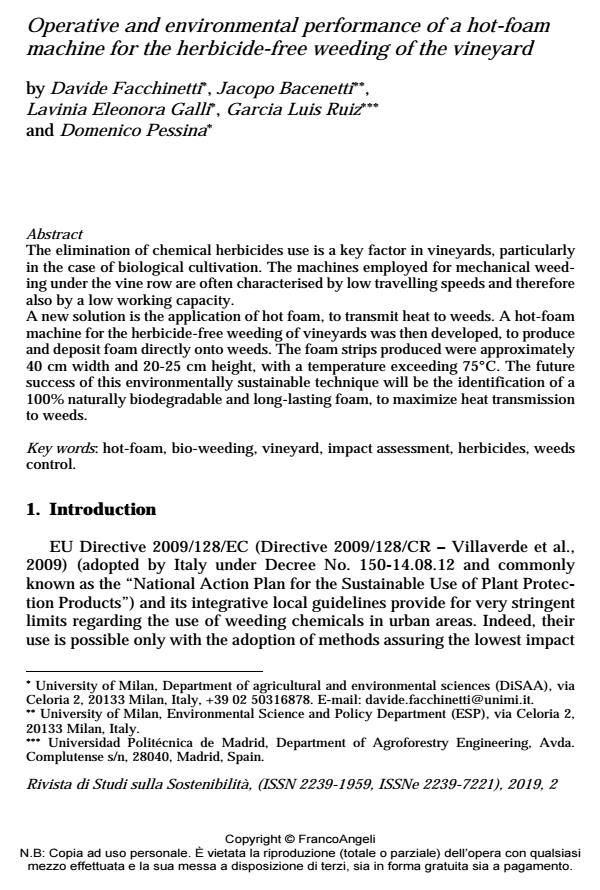Operative and environmental performance of a hot-foam machine for the herbicide-free weeding of the vineyard
Titolo Rivista RIVISTA DI STUDI SULLA SOSTENIBILITA'
Autori/Curatori Davide Facchinetti, Jacopo Bacenetti, Lavinia Eleonora Galli, Garcia Luis Ruiz, Domenico Pessina
Anno di pubblicazione 2020 Fascicolo 2019/2 Suppl.
Lingua Inglese Numero pagine 12 P. 363-374 Dimensione file 240 KB
DOI 10.3280/RISS2019-002-S1023
Il DOI è il codice a barre della proprietà intellettuale: per saperne di più
clicca qui
Qui sotto puoi vedere in anteprima la prima pagina di questo articolo.
Se questo articolo ti interessa, lo puoi acquistare (e scaricare in formato pdf) seguendo le facili indicazioni per acquistare il download credit. Acquista Download Credits per scaricare questo Articolo in formato PDF

FrancoAngeli è membro della Publishers International Linking Association, Inc (PILA)associazione indipendente e non profit per facilitare (attraverso i servizi tecnologici implementati da CrossRef.org) l’accesso degli studiosi ai contenuti digitali nelle pubblicazioni professionali e scientifiche
The elimination of chemical herbicides use is a key factor in vineyards, particularly in the case of biological cultivation. The machines employed for mechanical weeding under the vine row are often characterised by low travelling speeds and therefore also by a low working capacity. A new solution is the application of hot foam, to transmit heat to weeds. A hot-foam machine for the herbicide-free weeding of vineyards was then developed, to produce and deposit foam directly onto weeds. The foam strips produced were approximately 40 cm width and 20-25 cm height, with a temperature exceeding 75°C. The future success of this environmentally sustainable technique will be the identification of a 100% naturally biodegradable and long-lasting foam, to maximize heat transmission to weeds.
Parole chiave:Hot-foam, bio-weeding, vineyard, impact assessment, herbicides, weeds control.
Davide Facchinetti, Jacopo Bacenetti, Lavinia Eleonora Galli, Garcia Luis Ruiz, Domenico Pessina, Operative and environmental performance of a hot-foam machine for the herbicide-free weeding of the vineyard in "RIVISTA DI STUDI SULLA SOSTENIBILITA'" 2 Suppl./2019, pp 363-374, DOI: 10.3280/RISS2019-002-S1023